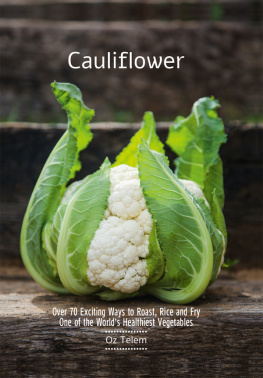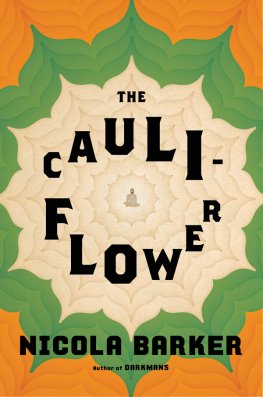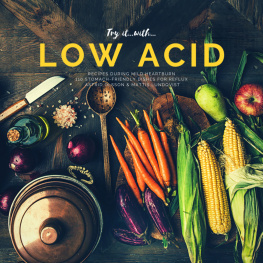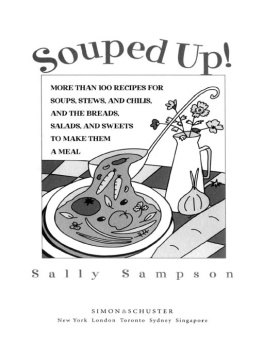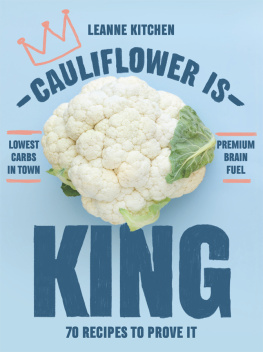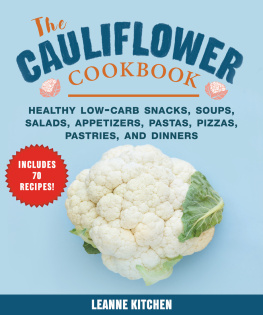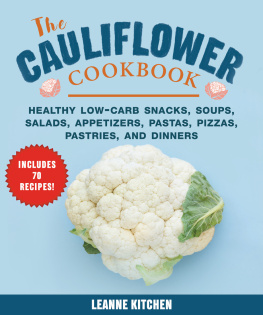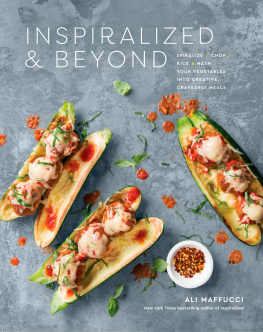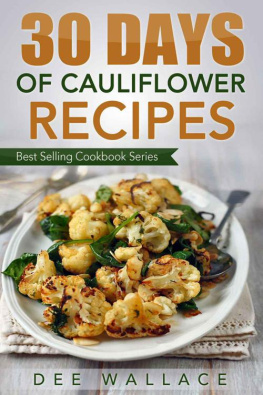

Dedicated to the women in my life

Preface:
Welcome to my first cookbook
When people ask me what exactly do I do for a living, my reply is, I help spread happiness through cooking. This is the ultimate goal of every post I publish on my blog thekitchencoach.co.il and every article I write.
Whenever you prepare a successful dish at home one that makes you and your loved ones smile you create joyful moments and pleasant, happy memories. It is a great privilege for me to be the person whose words help forge such moments.
I am excited to learn and discover the potential of humble ingredients, such as cauliflower, and convey that knowledge to other people.
Why cauliflower?
The idea of dedicating an entire book to the white princess came from my wife, Adi. Once she suggested the idea, it was like a lightbulb switched on. It felt so right, I knew I could devote myself wholeheartedly to this subject.
Of course, everyone loves cauliflower. It is nutritious and delicious, easy to find and can be cooked in every possible way. Yet, when I asked around, I found that most people knew only three or four ways to prepare it. So, I saw a gap I could fill.
In my research for the book, I collected recipes from Israel and abroad, from family and friends, and from readers who heard about my project. Many dishes borrow techniques usually reserved for other ingredients.
Another great source of inspiration was the internet. Many wonderful cauliflower ideas are trending online, and between the pages youll find my take on those I liked the most. You will also find recipes and methods that I developed from scratch and that feature here for the first time.
Before you start cooking
All the recipes were written for and tested by home cooks. I have put great thought into writing the cooking steps, as they are the building blocks of a succesful dish.
In almost every recipe you will find tips and instructions on how to make the dish gluten-free, vegan and even paleo-friendly.
If you are cooking the gluten-free recipes, remember that traces of gluten might be found in spices, nuts, bottled sauces and more, so shop with extra care.
I am at your service for any questions that might arise while using the book, so contact me at: Oz@thekitchencoach.co.il and dont forget to follow my Instagram @oztelem and tag #caulibook whenever you are cooking from the book!

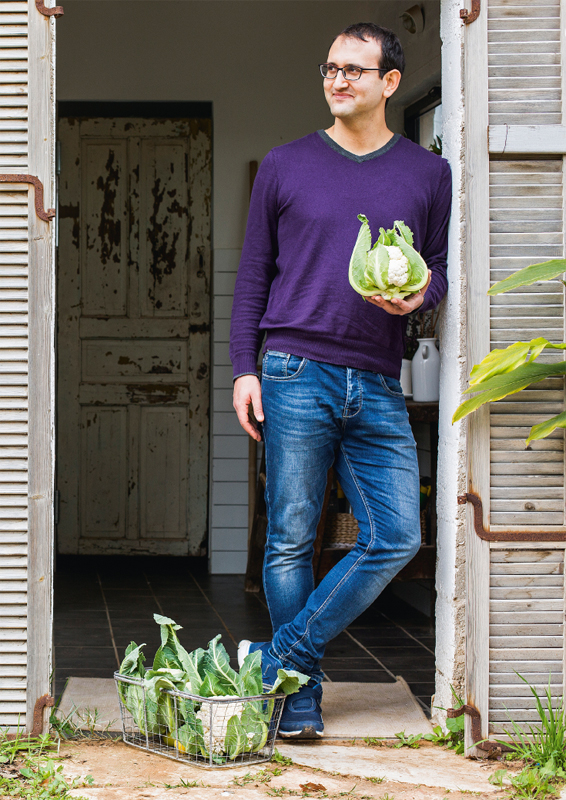
Contents
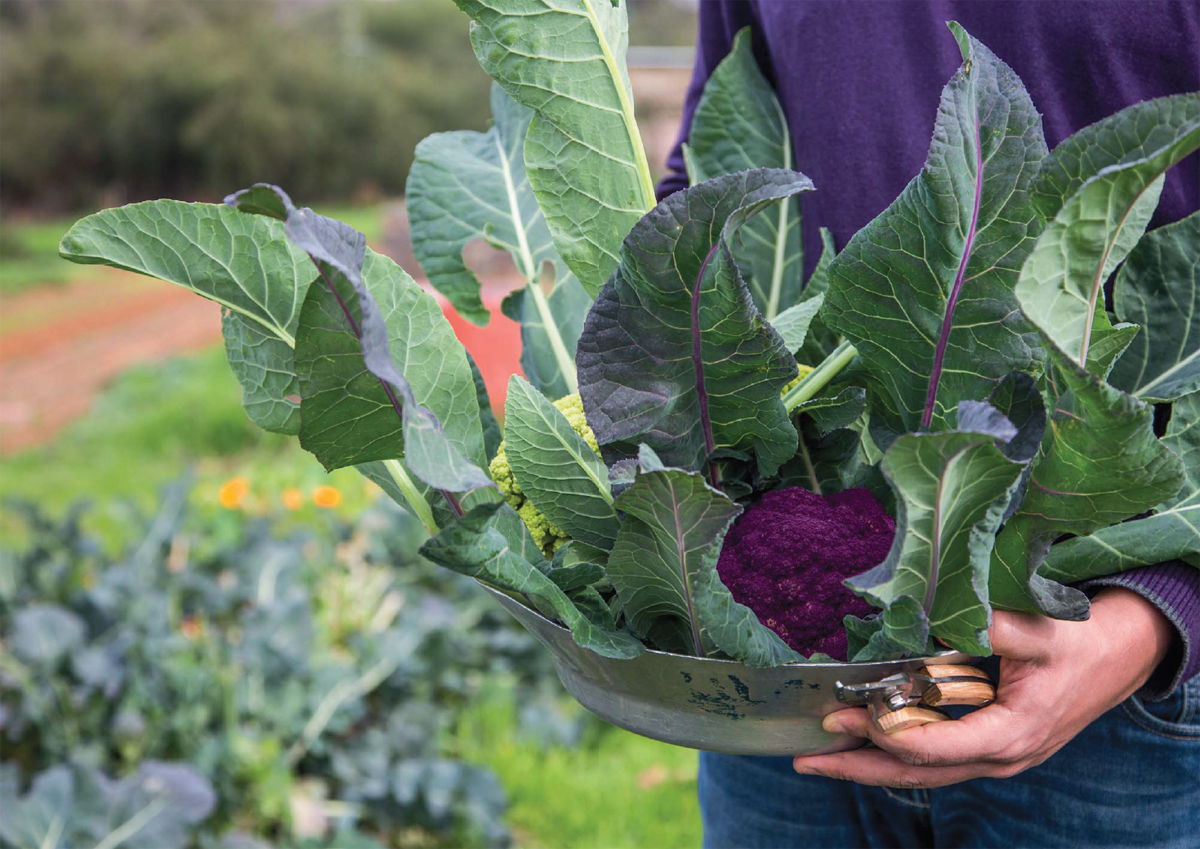
Blooming history
The star ingredient of this book belongs to a well-established family, the Brassicaceae, with many of its members considered superfoods, as they are packed with nutritional value. The father of the cauliflower is a plant called wild cabbage (Brassica oleracea), that still grows wild in some parts of the Mediterranean and Western Europe. Wild cabbage is the ancestor of many commonly loved vegetables.
Farmers started cultivating it around 4,000 years ago, and through the years, breeds with distinct characteristics emerged. A cultivar with a dense head of leaves became cabbage; one with a swollen stem became kohlrabi and another with concentrated green florets became known as broccoli.
Some wild cabbage varieties concentrated their buds to form small heads and ancient growers found them to be delectable. They kept and used the seeds from that mutation, and thanks to them we have cauliflower. Where exactly did the first white floret emerge? It is unclear. Some historic evidence points towards ancient Rome, others to medieval Syria and Turkey. Wherever it originated, today it is grown worldwide.
Lady cabbage
In almost every Latin language, the meaning of the name cauliflower is flowering cabbage. Cauli is an old word for cabbage. Its Hebrew name is kroovit, which translates to lady or female cabbage since, in Hebrew, all nouns are treated linguistically in male or female forms. Thats why the cauliflower is the queen of vegetables.
Exposure to light
Broccoli is grown exposed to the sun, thus developing a green colour (thanks to the pigment chlorophyll). However, cauliflower gets no tanning time: it is grown covered and wrapped in its outer leaves, which, in turn, protect it from the sun, allowing it to develop and accumulate the white buds we know and love.
Once a cauliflower is exposed to direct sunlight, it takes on purple and yellow hues and goes into blossoming mode, which greatly shortens its shelf life.
From sprout to full head, it takes about three months (depending on season and variety) for cauliflower to reach harvest size. Though it is available year-round, the most pristine heads grow during winter and spring.
Giant heads
According to Meir Machluf, one of the most prolific growers of cauliflower in Israel, its optimal harvest weight is around 1.2 kg (2.6 lb) per head.
In this book, when a medium-sized cauliflower is referred to, it should weigh about 1 kg (2 lb 3 oz). Cauliflower heads can greatly exceed this size, and grow to over 3 kg (6 lb 9 oz) in weight, but farmers rarely let them grow this large because of a lack of demand.
However, if you stumble upon an extra-large cauliflower, know that it can deliver great value for the money. I once stretched a 2 kg (5 lb 8 oz) cauliflower to four different dishes, and it cost mere pennies at the local market.
How to select
Turn the cauliflower upside down and look at its central main stem. It should look as though it was just cut from the plant: moist, not dry or cracked. The florets should be tight-fitting and firm to the touch, preferably free of any blemished areas. Note that the florets bruise easily, and sellers might trim away those bits (and thats OK).
If the leaves and stalks surrounding the cauliflower are nice and fresh, tell your greengrocer to keep them on you will find many uses for them in the following pages.
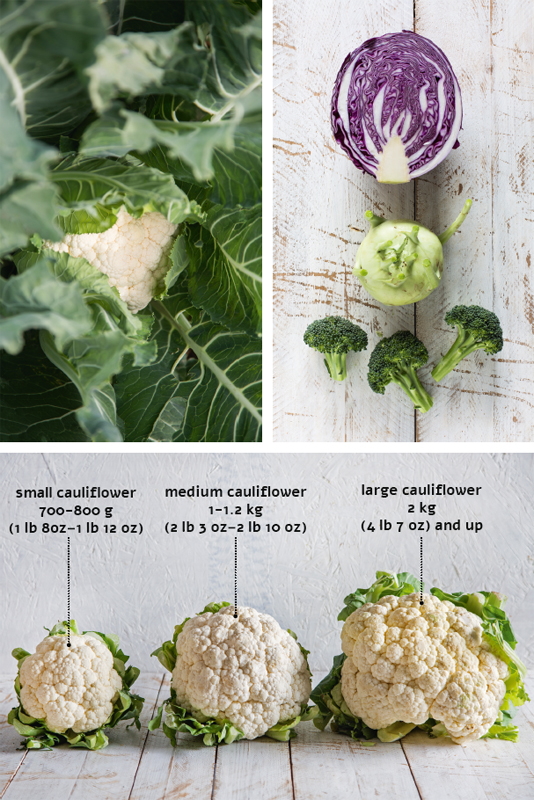
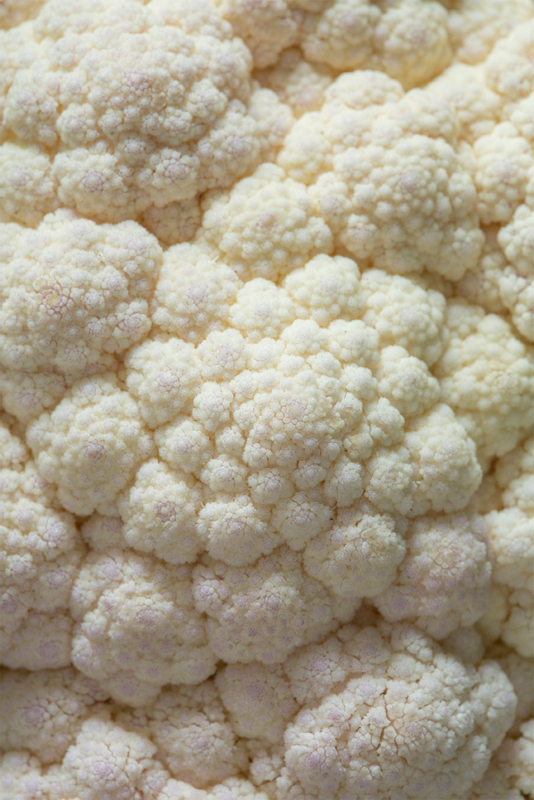
How to store
Cover the florets with paper towel (if it came covered in cling film (plastic wrap), remove it). Place in a paper bag and stash in the bottom of the fridge, where it will keep for up to a week (depending on how fresh it was when bought).
How to freeze
Any excess cauliflower you might end up with after you have cooked your main recipe can be stored in the freezer for future use. Florets should be cut to a similar size (see ) and kept in resealable bags for easy access.
Using defrosted florets is similar to using pre-cooked ones: they lack the crunch and freshness needed for raw salads, but otherwise, they can be used in almost any other preparation.

